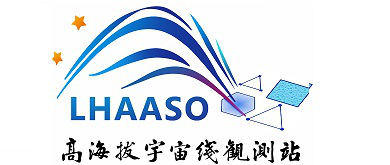Description
LHAASO is an instrument designed for detecting cosmic rays (CRs) and gamma rays at TeV to PeV energies. The decays of heavy dark matter particles in the Galactic halo may produce high-energy electrons that can be detected by LHAASO. The main background for the LHAASO’s CR electron measurements is the hadron residuals due to mis-identification of the particle species. In this paper, we estimate the LHAASO’s electron background using the known all-particle CR spectrum and the hadron rejection efficiency of LHAASO. With the estimated background, we predict the capability of LHAASO to constrain DM decay lifetime at 95% confidence level for various channels. We find that, if neglecting systematic uncertainties, the CR electron measurement by LHAASO can improve the current best results by up to one order of magnitude for DM masses between 100−1000 TeV. However, indirect measurements of CR electrons by ground-based experiments suffer from sizeable systematic uncertainties. With the systematic uncertainties included in the calculation, the projected constraints will be largely weakened. So for using the CR electron observation of LHAASO to constrain the DM parameters, the key point is whether the systematic error can be effectively reduced.

